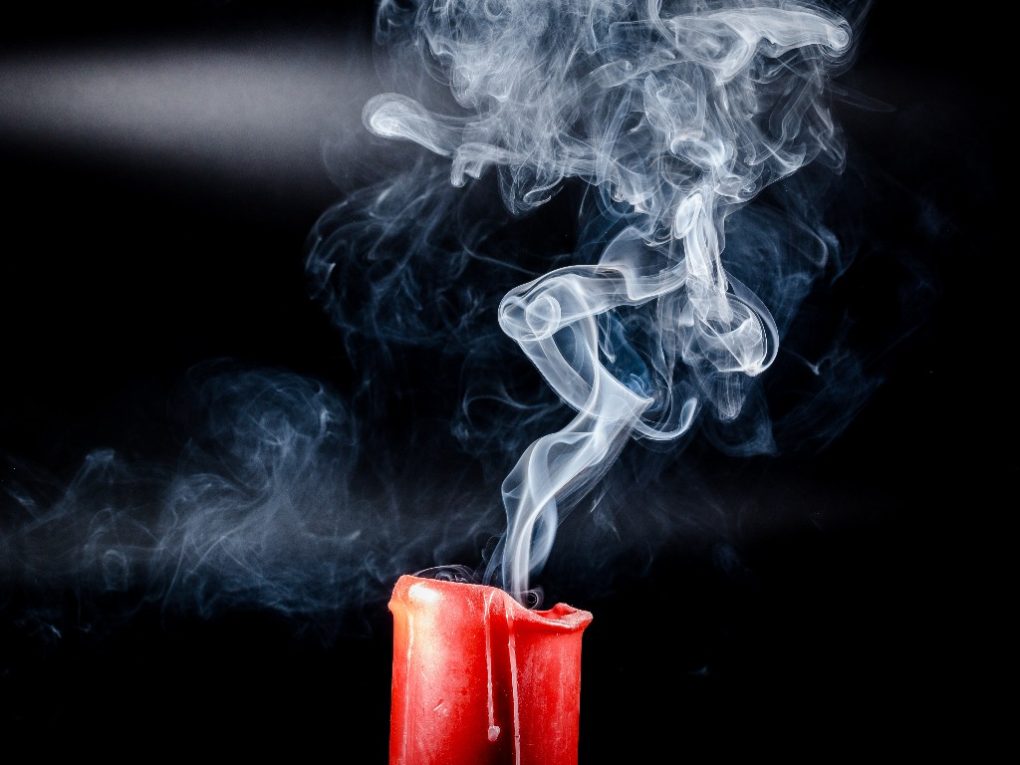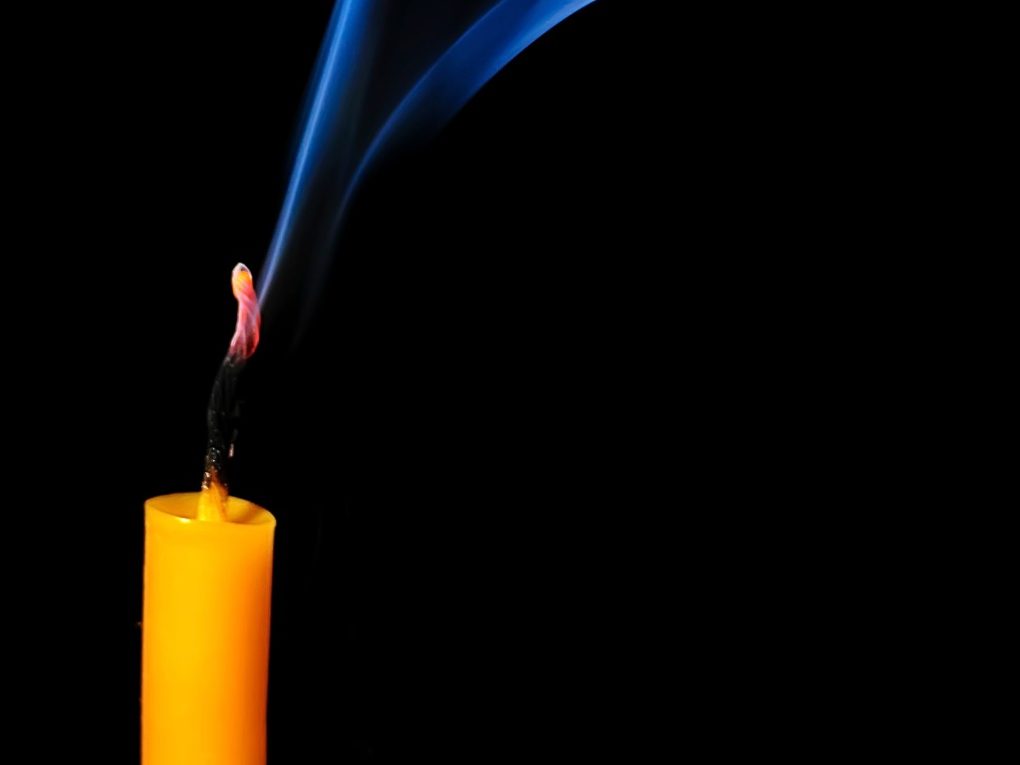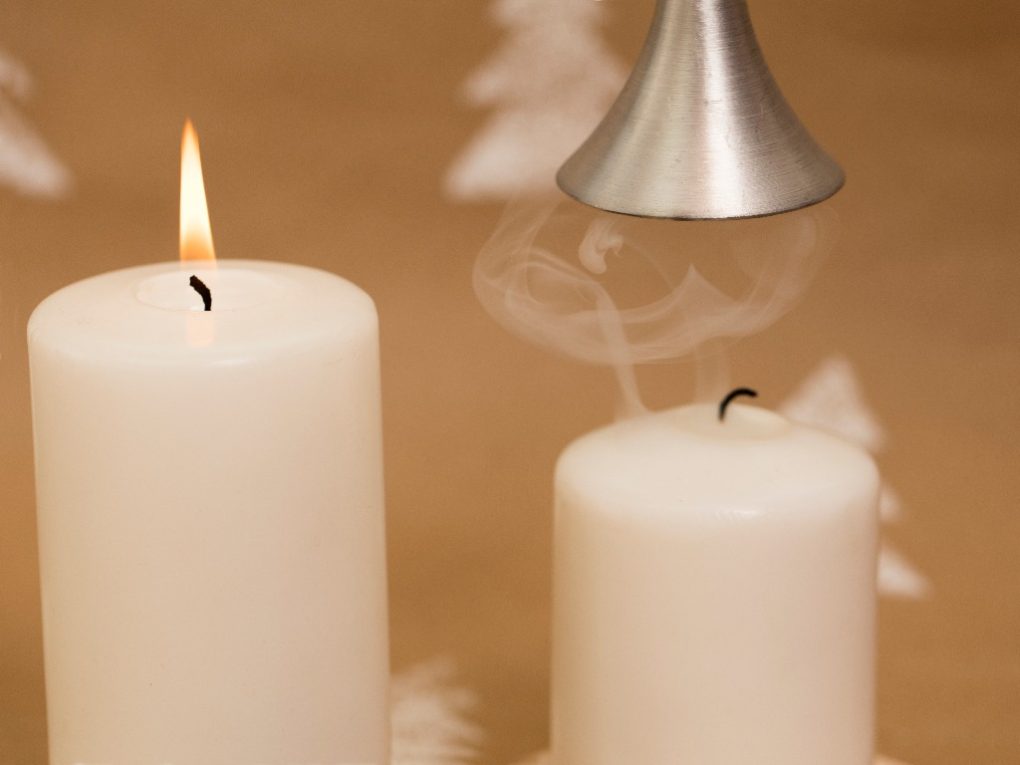Why Does a Candle Smoke When You Blow it Out: Understanding the Candle Smoke When You Blow It Out
The smoke is usually caused by the candle’s wick being too long. If the wick is too long, it will continue to burn even after you blow out the flame, resulting in smoke. Trimming the wick to 1/4 inch is important to prevent excessive smoking. Secondly, if the candle is made from low-quality wax or contains impurities, it may produce more smoke when blown out.


Soy wax and beeswax candles produce less smoke than paraffin wax candles. Blowing out a candle can create a gust of air that disturbs the flame, causing it to flicker and smoke. Blowing out a candle too forcefully can also cause the hot wax to splatter, creating smoke. When a candle burns, it produces soot, which can collect inside the candle jar or on the wick.
Reasons Why Blowing Out a Candle Produces Smoke
Combustion Process
The combustion process is a chemical reaction between fuel and oxygen that produces heat, light, and other byproducts. In the case of a candle, the fuel is the wax and the wick, while the oxygen comes from the air. When the candle is lit, the flame’s heat melts the wax near the wick. The melted wax is then drawn up the wick by capillary action. The flame’s heat vaporizes the liquid wax, which reacts with oxygen in the air and burns.
During combustion, the wax molecules break apart and recombine with oxygen to form carbon dioxide and water vapor. The flame’s heat provides the energy to break the bonds between wax and oxygen molecules. This energy is released as light and heat.
Incomplete Combustion
According to Science Direct, incomplete combustion occurs when there is insufficient oxygen to burn all the fuel completely. The flame is extinguished when a candle is blown out, and the wax and wick are still hot.
The heat from the wax and wick continues to vaporize the wax, but there is no longer enough oxygen present to burn the vaporized wax completely. As a result, the vaporized wax molecules combine and form larger molecules that are not completely burned. These larger molecules are released into the air as smoke.
The smoke from a candle comprises tiny particles of soot and unburned wax molecules. The soot particles are black and formed when the wax molecules combine without enough oxygen. The unburned wax molecules are released into the air as a gas and seen as white smoke.


Oxygen Deprivation
When you blow out a candle, you are essentially cutting off the oxygen supply to the flame. Oxygen is a crucial component in the combustion process; the flame will eventually die out without it. However, the wax and wick remain hot for a few seconds after the flame is extinguished, which produces smoke.
Unburnt Wax
Another reason blowing out a candle produces smoke is that the wax is partially burnt. When a candle burns, the wax is heated and vaporizes into a gas, reacting with oxygen to produce a flame. However, when you blow out a candle, the wax vaporizes but isn’t combusted. This unburnt wax then cools and condenses into tiny particles we see as smoke.
Temperature Gradient
Blowing out a candle creates a temperature gradient. The flame produces a lot of heat, which creates an upward draft of hot air. This hot air rises and cooler air rushes in to replace it. However, when you blow out a candle, the hot air stops rising, and the cooler air rushes in, creating a downward draft. This downward draft can push the smoke and unburnt wax particles down towards the wick, where they can condense and form smoke.
Science Behind Candle Smoke
Chemical Reactions
When you light a candle, the heat from the flame vaporizes the candle wax, which is made up of hydrocarbons. The heat breaks down the hydrocarbons into smaller molecules, which react with oxygen in the air to produce carbon dioxide, water vapor, and heat. This is known as combustion, and it is the process that allows the candle to burn.
When you blow out a candle, the heat source is removed, but the wax vapor remains in the air. As the vapor cools, it condenses into tiny droplets of liquid wax. These droplets are still hot enough to vaporize but not hot enough to react with oxygen and produce combustion. Instead, they release unburned hydrocarbons and soot particles into the air, creating visible smoke.
Physical Processes
The smoke from a candle is not just made up of unburned hydrocarbons and soot particles. It also contains water vapor, which is produced by the combustion reaction. When the hot wax vapor cools and condenses, it mixes with the water vapor to form tiny droplets that make up the smoke.
The shape and color of the smoke can also be affected by physical processes. For example, if the candle burns in a drafty area, the flame may flicker and produce more smoke. The smoke may also be darker if the wick is shorter or the candle is made from low-quality wax.
Tips to Minimize Smoke When Blowing Out a Candle
Use a Snuffer
A snuffer is a tool to extinguish a candle flame without producing smoke. It works by cutting off the oxygen supply to the flame, which causes it to go out quickly and without producing any smoke. Place the snuffer over the flame and wait a few seconds for it to go out. Candle snuffers are available in different shapes and sizes and are quite effective at minimizing smoke when blowing out a candle.


Trim the Wick
Another way to minimize smoke when blowing out a candle is to trim the wick before lighting it. A long wick can cause the flame to flicker and produce more smoke than necessary. Use scissors or a wick trimmer to trim the wick to about 1/4 inch before lighting the candle. This will help the candle burn more evenly and produce less smoke when blown out.
Avoid Drafts
Drafts can cause a candle flame to flicker and produce more smoke than necessary. One tip I can give to minimize smoke when blowing out a candle is to place it in a draft-free area. Avoid placing candles near open windows, doors, or air vents. If you must blow out a candle in a drafty area, try to shield it from the draft with your hand or a piece of paper before blowing it out.
